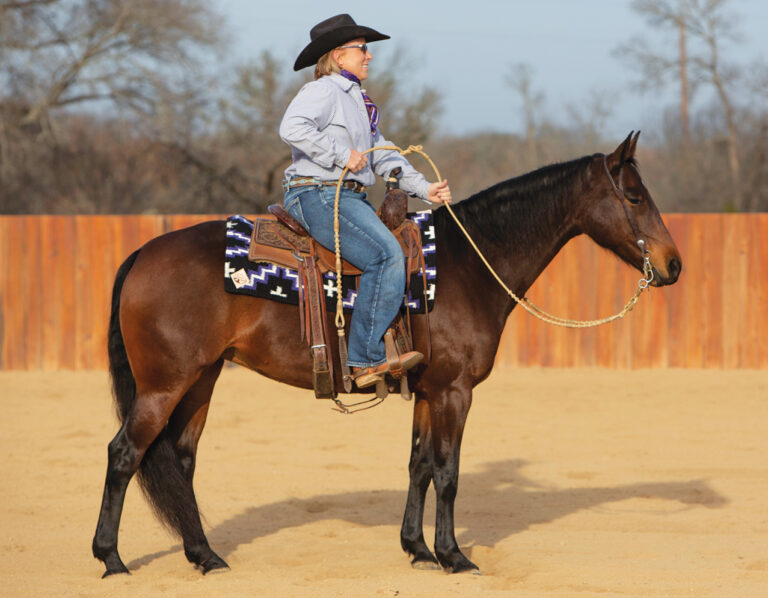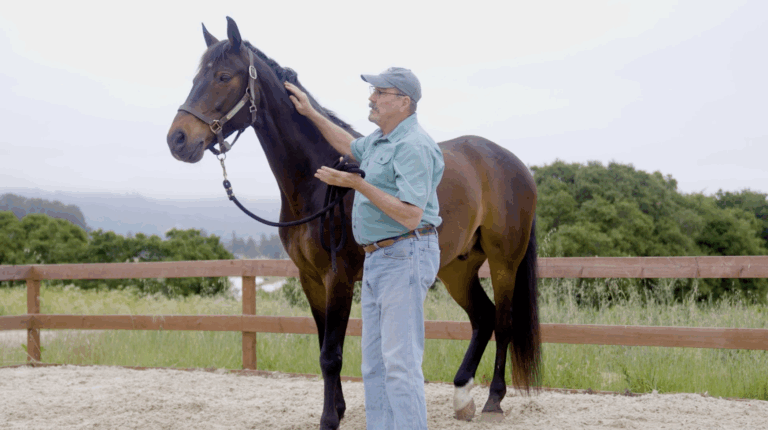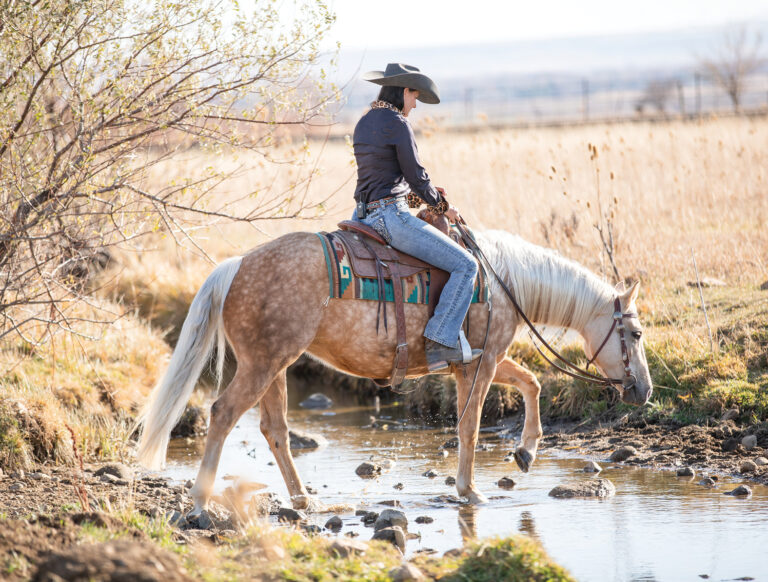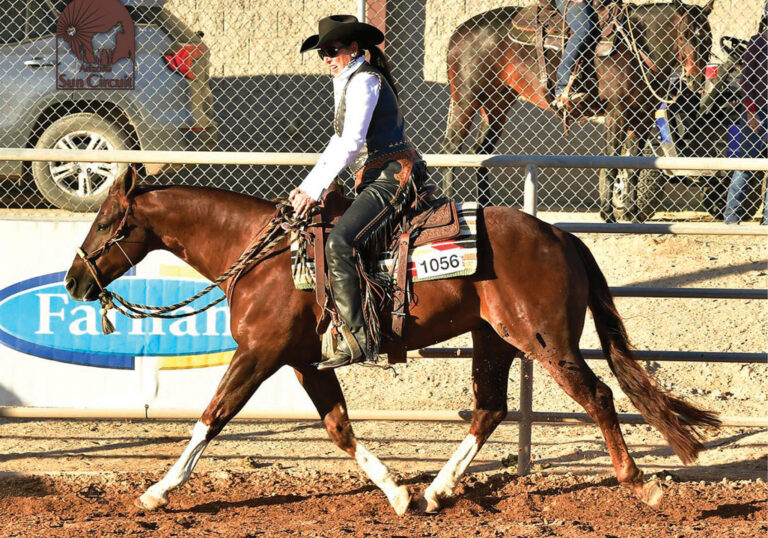Does your horse have a quirk? By that, I mean a mannerism innate to his personality, such as territoriality, being a crank, or perhaps having a mischievous streak (unlike a vice or habit, which is learned).
I have several quirky horses in my barn right now. How I deal with them now, with decades of experience under my belt, is a lot different than how I used to deal with them when I was younger.
In fact, I now have three basic rules for dealing with a horse that has personality quirks. I share these rules with the young people who come to work for me. And here, I’ll share them with you. (Note: In this article, I’ll deal strictly with quirks on the ground; quirks under saddle are an entirely different topic that I’ll address in a future issue.)
Rule #1: Thou Shalt Not Fight
Quirks can be annoying, and when you get annoyed you can get sucked into an argument, which can lead to a fight. I get it. But fighting can take a minor annoyance and turn it into an issue.
For instance, we have a gelding that will untie himself in an instant, regardless of the knot. He’s like an equine Houdini. He also takes great joy in destroying his sheets and blankets.
Why does he do it? I don’t know. In my experience, such horses tend to be smart and busy-minded. I know this gelding isn’t bored: He’s an all-around horse that shows in events from halter to roping. We take him everywhere, and he works hard. I can’t understand why he isn’t happy to just stand still and rest when he’s not working. But he’s not.
He’s into everything. All the time. My younger self would be doing a lot of yelling and correcting, in an effort to change his behavior. I’d be picking at him all the time. And that would just make him mad—and me crazy.
My older, wiser self understands that this horse is what he is. You can get after him, but it’s not going to change him. So, just like dealing with a smart, busy-minded kid, it’s up to me to keep his mind busy. To do that, we provide him with all kinds of stall toys, such as balls he can kick around and rollers he can mouth.
We’re careful to use snap-ties and cross-ties to tie him, so he can’t untie himself and mosey off. And we use a muzzle device, when needed, so he can’t tear up his blankets.
Is he a pain to deal with? Yes. Is he worth the extra effort? Absolutely. He’s a blue-collar workhorse that’d be hard to replace.
Rule #2: Be Creative
Another horse we have, “Preacher,” has graced the pages of H&R numerous times over the years. He’s won everything there is to win, and we’ve been hauling him for over 16 years. But one of his quirks used to make that tough: He’s a trailer kicker. A big-time trailer kicker.
Why? I don’t know. He’s done that since I bought him as a yearling. He came that way. Maybe he’s claustrophobic. I know some horses learn to kick as a habit because people turn at too high a speed and accelerate/brake too hard. Stallions can kick if there’s a mare in the trailer. But Preacher? It’s just him.
A horse that kicks can not only damage your trailer, but also can seriously damage his legs. So with Preacher, I turned to hobbles. First, I hobble trained him, using the gear on his hind legs. Whenever we haul him, I’ll put the hobbles on his hind pasterns (I use the type that you can snap together in the middle; see photos above), then snap them together once he’s loaded.
That way, he’s physically unable to kick, but is still able to balance. He’s worn them for so many years that today, the feel of them is enough to curb his urge to kick; I rarely have to fasten them anymore.
Solutions such as hobbles (and stall toys) aren’t hard to implement. You just have to use your brain.
Rule #3: Be Patient
Preacher has another quirk: He’s a grump. My wife, Dana, and I tell people that he’s the happiest unhappy horse we’ve ever met. He pins his ears when you walk into his stall. He pins his ears when you saddle him. (See photo above.) He never tries to bite, but he sure looks bitter.
Why? Again, I don’t know. He’s always been a grump. He lives a great life. He’s loved. He’s pampered. He’s a pet, really. He may be territorial about his stall. He may not like being saddled. That’s just him. He always puts his ears up when we ride him, and that’s what counts.
My younger self used to get after him for being such a grump. But I soon learned that rather than making an enemy of my horse (which the constant bickering eventually would do), I was better off being patient. He pins his ears—so what? No harm, no foul. (Note: If he did try to bite, I’d have no option but to correct him, from a safety standpoint.)
So we just ignore him. In fact, we laugh at his grumpiness. It’s a quirk. And if your horse has one like it (and as long as it’s not dangerous), do the same. Otherwise, you’ll drive him (and yourself) crazy.




